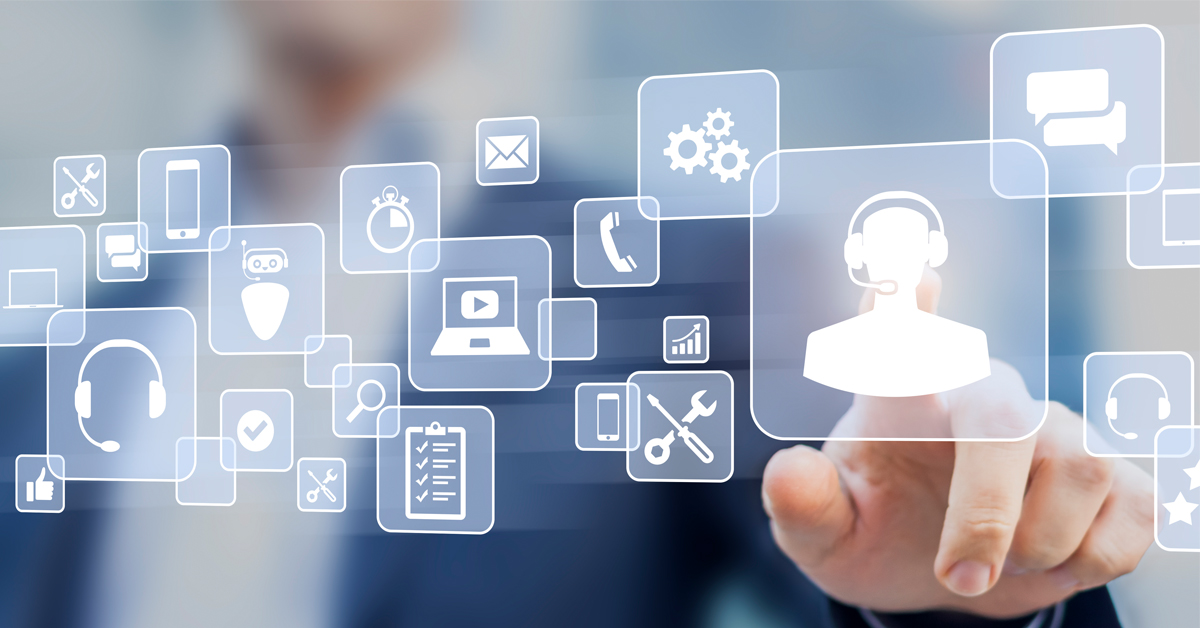Top 5 Must-Have Contact Center Software Features in 2021
Technology is changing the way contact center agents work with customers and each other – especially pertinent in 2021. In this blog, we cover the top contact center software features that you must have to enhance the customer experience.
Most contact centers have some sort of technology supporting their operations.
In fact, the majority of customer support teams leverage anywhere between one and ten different tools to interact with customers.

Here’s the problem: 46% of these support professionals believe that their current technology stack is holding them back from achieving their goals.
This is usually because these are one-off, disconnected tools. They are clunky, siloed and ultimately do more harm than good. Because when the job is more difficult for agents, the experience is worse for customers.
That’s where contact center software comes in.
What is Contact Center Software?
Contact center software is a solution that sits at the center of your CX operations, creating a real-time, events-based link between your telephony system, CRM, marketing automation platform and other tools.
The benefits of this type of solution are the features it unlocks. When all your tools are communicating through one system, call center agents are able to get the information they need to help customers and optimize operations over time. Here are the features that help the most.
Top 5 Must-Have Contact Center Software Features
#1. Screen-Pop
A screen-pop automatically displays caller information on an agent’s screen when a call comes in.
This alert includes any relevant caller information found in the CRM database, ensuring that agents are ready to help customers—even before they answer the call. Ultimately, screen-pops save time, improve call resolution and give the agent the opportunity to personalize the call and provide an even better customer experience.
#2. Custom Reporting
Your technology is only as effective as the insights you can gain from it. That’s why custom reporting of call metrics is the next essential contact center software feature.
Call reporting should include crucial metrics, like call time, queue time, talk time and hold time. You should also consider tracking first call resolution and customer satisfaction ratings. Knowing these metrics will make it easier for you to make meaningful, data-driven business decisions. And with custom reports available on an hourly, daily and weekly basis (and more), you will be able to clearly see where you need to improve agent performance and customer experience.
#3. Click2Call
Click2Call is a VoIP (Voice over Internet Protocol) feature, providing customers with an easy way to contact you. Paired with softphone control—a software program that mimics the functionality of a desk phone on your screen without the need for hardware—this call can be received directly within your CRM platform.
Click2Call is an essential feature because it makes the customer experience even more painless. By removing the need to remember or copy and paste your phone number, the customer can simply click and automatically get through to you. Plus, it streamlines the agent experience by not having to switch screens to receive a call.
#4. Job Engine
Contact center software should provide a job engine that synchronizes products and other systems, databases, web services and more.
Also, users, tickets, items and other job-related pieces of information should be automatically created in real-time.
These features are essential because it eliminates a lot of manual work and redundancy across systems—making the job easier for agents so they can focus on more rewarding activities and improving the customer experience.
#5. Recording & Voice Mail Integrations
Additional telephony integrations are essential to your contact center software.
For example, call recordings, voice mails and call metrics should all automatically archive in your telephony system, CRM or other external system.
This allows agents to listen to recordings or messages to return calls faster and more efficiently. Also, managers can go back and analyze calls for continuous improvement, and there’s a record of the interaction in case more training or other operational adjustments need to be identified. All in all, this leads to more compliant agents and improved customer satisfaction.
Conclusion: How to Get Essential Features
When your telephony system and database are linked, your agents have all the information they need at their fingertips—without ever having to leave the CRM. But these features are only possible when you integrate your CRM and telephony systems. This is known as a Computer Telephony Integration (CTI), which is something you should look for in your contact center software of choice.
While custom CTI is possible, it takes a long time with high development and implementation costs. And if any of your CRM or telephony systems change in the future, you will have to start over.
That’s why you should look for a CTI solution provider that:
- Requires zero custom code
- Prices per seat as a subscription (rather than an up-front capital expenditure)
- Combines a robust core engine with prebuilt connectors for leading CRMs, telephony systems and other critical customer service tools.
CDC’s CTI solution connects over 70 leading contact center systems—with more being added every week, or at customer request. As a result of this powerful integration, you can enjoy all the contact center software features discussed above.
Whatever your contact center technology stack looks like, CDC Software makes it work together better. Find out more by contacting our team.